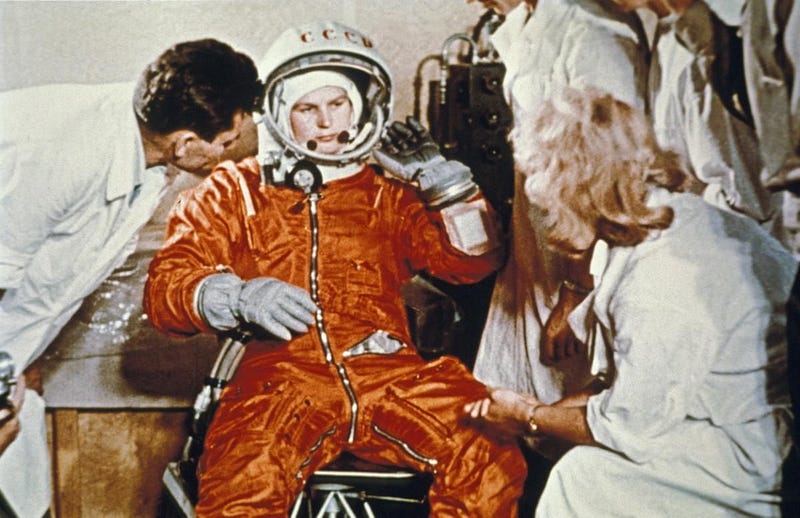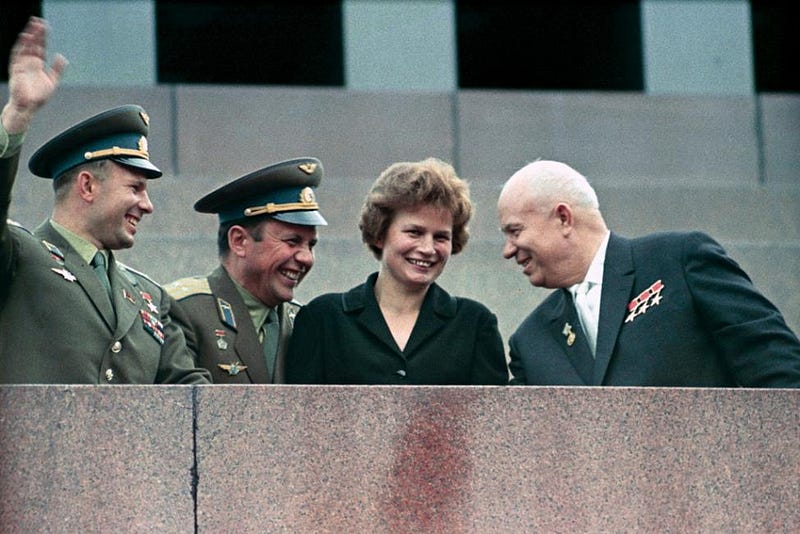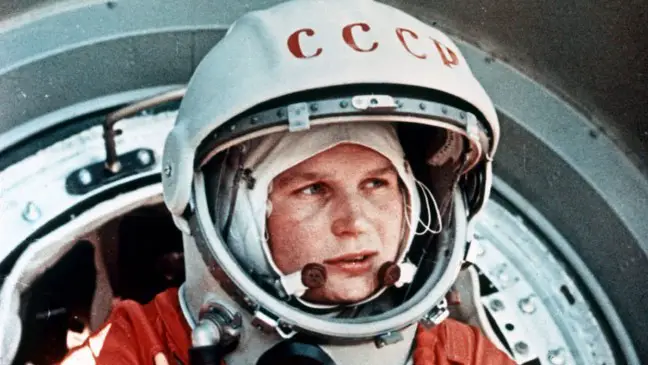 he space race between the Soviet Union and America was the central piece of the Cold War in the 1960s. In this period, a country’s prestige counted as much as their military might in terms of international status, making the space race and reaching certain milestones of it important for both rivals.
he space race between the Soviet Union and America was the central piece of the Cold War in the 1960s. In this period, a country’s prestige counted as much as their military might in terms of international status, making the space race and reaching certain milestones of it important for both rivals.
Only 2 years after Yuri Gagarin’s momentous journey to being the first person into space, another massive milestone would be achieved by the Soviet Union. One with much deeper implications than the competitiveness of two rival countries. Putting the first woman into space.
The making of Valentina Tereshkova
Валентина Владимировна Терешкова (Anglicised: Valentina Vladimirovna Tereshkova) was born to a family of migrants from Belarus in the Yaroslavl Oblast, around 300km south from Moscow on 6 March 1937.
Early in life, her situation seemed similar to many of the millions of Soviet children who were born in this time period. Her father perished serving in the Red Army during the Winter War when she was only two leaving her mum to take care of her and her other two siblings.
This situation was commonplace for many children born in the period 1930–1940 due to the mass casualties racked up by the Soviet Union during the conflicts of this time period, especially during the Great Patriotic War (a.k.a. World War Two) where over 26,600,000 mostly Soviet men but also women and children died either as a civilian casualty of war or because of their service in the Red Army.
Because of the unfortunate death of her father, Tereshkova’s mother had to move to another city within the Yaroslavl Oblast to search for a job that would allow her to support her children. In the end, she settled at Krasny Perekop cotton mill.
Shooting for the stars
Even at a younger age, it was evident that Tereshkova wasn’t like the average Soviet girl. After her graduation at 17, she would start on the usual path by working in a textile mill until skydiving caught her attention. This interest led her to perform her first skydiving jump on 21 May 1959, starting her on a path of competitive parachuting, a crucial point in her journey to becoming an astronaut, which she hid from her family.
Tereshkova held no previous bias toward astronomy or any desire to go to space; only because of her lengthy experience as a competitive parachutist was she chosen as one of 400 women to be screened as the candidates for the first woman in space. The process was brutal, with only 58 of the 400 women meeting the initial criteria with a further 34 being dropped by the head of the operation, decorated Soviet pilot Nikolai Kamanin.
By the end of the selection process, only 4 women and Tereshkova remained. Priority was given to their training due to the news of America also training female pilots for a potential space flight. Kamanin remarked:
“We cannot allow that the first woman in space will be American. This would be an insult to the patriotic feelings of Soviet women.”
Breaking a historical barrier
Throughout training, Tereshkova’s tenacity showed itself to outmatch most of the other skills of the other 4 candidates. Kamanin took a liking to this and used to refer to her as “Gagarin in a skirt.” This translated over in the decision of The State Space Commission when they nominated Tereshkova to be the pilot to undertake the flight of Vostok 6 into orbit alongside a male counterpart on a separate craft, Vostok 5.
Soviet Premier Nikita Khrushchev gave the commission his blessing on the choice seeing the propaganda potential of the young Soviet girl with a patriotic collective worker father who died for his country. The zero-to-hero journey was a key to many Soviet heroes, such as Yuri Gagarin himself, who was born to two collective workers.

When it came to flight day, both Tereshkova and her backup Solovyova were driven by bus to the launchpad clad in their spacesuits. Following a tradition set by Yuri Gagarin, Tereshkova urinated on the bus tire, becoming the first woman to do so. After a long 2-hour wait from being sealed into her capsule to launch, the fire of the rockets sparked, and there was liftoff.
The whole operation, from launch to landing, went as perfectly as it could have. So much so that Tereshkova was promoted to captain halfway through the flight. Shortly after the thunderous launch, Tereshkova became the first woman to reach space beating the Americans to the record.
Tereshkova would float in space for around 2 days and 22 hours, beating the flight time of most of her male counterparts at the time. The research she conducted while in orbit, such as documenting the ozone layers of the earth with her camera, would be used for many years after her flight providing important information to scientists across the union.
What goes up must come down
After her flight time was over, she ejected her pod from the main rocket structure and entered low earth orbit. After a long fall, she ejected out of her capsule and parachute down. At this moment, her parachuting training had to kick in because of the strong winds that were pushing her in the air; without her experience, we can say that she would’ve ended up with much worse injuries than a scratched nose.
She landed in the Altai Krai, a region of Russia north of Kazakhstan, on 19 June 1963. Locals helped her get her gear off and offered her food and shelter for a while until the Soviet authorities arrived to pick up the new hero.

On 22 June 1963, Khrushchev met Tereshkova and awarded her the Hero of the Soviet Union medal, in front of thousands, atop the Lenin Mausoleum. Tereshkova had only one request for the population of the Soviet Union. She voiced her request during the ceremony in which she proclaimed to the crowd below:
“My father perished defending our country and my mother brought up her three children. We know the bitterness of that war. We don’t need war”
After the ceremony, she requested for the location of her father’s death to be found. The government fulfilled her wish and built a monument in his name near Lemetti, Karelia.
When the blocks fall into place
Tereshkova’s achievement is a culmination of the smaller achievements made in the name of feminism within the Soviet Union. Since its birth, the Soviets have been trying to break the status quo for women, less so during the Stalin years.
Under Lenin and Khrushchev, women’s rights moved forward at a much faster pace than in the west, with women being pushed to achieve the same if not more than their male equivalents. In a society based on equality within the classes, such was the norm, and putting the first woman into space is the perfect example of this.
We can learn a lot from Tereshkova’s journey. From factory worker to astronaut, she is the perfect example of a Soviet success story. Although some parts of her success have been overblown for propaganda purposes, the message should still be clear. No matter the gender we can still excel if we pursue our dreams.

Student of Philosophy, Politics and Economics. History fanatic. Contact: aneculaeseicg@gmail.com





